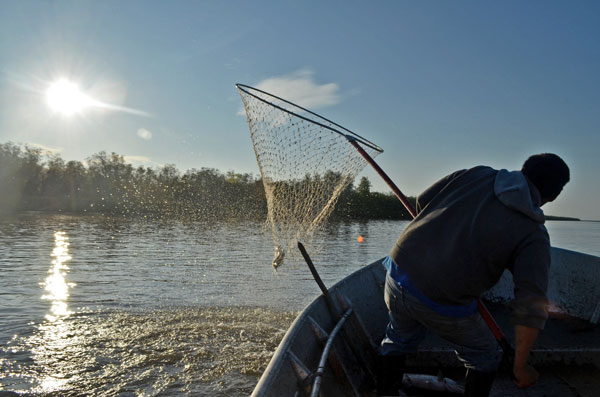
People on the Yukon and Kuskokwim rivers are expecting another dismal year for harvesting salmon, the food that used to fill their smokehouses and freezers. It’s a disaster that repeats annually, felt acutely in the region and accepted elsewhere as the new, bad normal.
Here’s a primer on the Y-K Delta salmon crisis and how this year is shaping up.
Which salmon are affected?
Chinook (king) and chum are the major salmon species on the Yukon and Kuskokwim. They’ve been at historically low numbers in both rivers for years. The coho (silver) returns have also dropped.
How long has this been happening?
This will be the fourth year subsistence fishing has been closed or severely restricted on both rivers.
For the past three years, the Yukon hasn’t seen sufficient numbers of chinook even to meet the top priority – allowing enough salmon to escape up the river to spawn. Most escapement goals for Yukon chum and coho weren’t met either.
But the problem goes back farther than that. The Yukon chinook subsistence harvest has been below the level of need since 2008. Chum dropped significantly in 2017 and haven’t bounced back.
On the Kuskokwim, the picture is only slightly better. The chinook crash there was underway by 2009 and continues. Chum have also collapsed to record low numbers. In 2021, the Kuskokwim saw an 84% decline in chum compared to just a few years prior, with only a slight rebound last year. And coho have been sparse for the past three years.
Are people still fishing there?
The rivers used to support commercial salmon fisheries. On the Yukon, there’s been no commercial chinook fishery since 2007. Commercial chum opportunities have been spotty.
And now subsistence – harvesting for food, rather than money or sport – is severely restricted, too.
Yukon subsistence fishermen haven’t been allowed to target salmon for two years, with only limited numbers coming from test fisheries or in subsistence nets intended to catch fish other than salmon.
On the Kuskokwim, subsistence fishing for chinook has been severely restricted. Last year, for the eighth year in a row, the harvest was less than half of what the state considers adequate to meet the need. State, federal and tribal fishery managers credit residents for sacrificing their historically normal chinook catch to meet escapement goals.
The Kuskokwim chum harvest has also been well below the level of subsistence need for the past three years.
What’s the outlook for this year?
Yukon chinook are projected to come back in numbers too low to meet the escapement target, the number needed for healthy reproduction. That leaves no likelihood for even a subsistence harvest.
The Yukon chum runs are also expected to be poor, although managers may allow some subsistence fishing for summer chum.
Fish managers of the Kuskokwim expect to meet the escapement goal for chinook, allowing for a very limited subsistence harvest. It’s not clear yet whether chum and coho will meet the escapement target.
Why is this happening?
Multiple factors are at play: Warming ocean temperatures, reduced prey supply in the Bering Sea, warm river temperatures, a parasite that plagues Yukon chinook, bycatch – the accidental catch – of salmon by the Bering Sea pollock fleet, and the interception of fish on the Alaska Peninsula fishery known as “Area M.” The last two items on that list are white-hot political controversies.
The Bering Sea commercial fleet has caught 13,000 chinook so far this year. It infuriates Yukon and Kuskokwim subsistence fishermen who have sacrificed the fish they need to feed their families to allow for escapement. Pollock fishermen point to data suggesting only a tiny number of those fish would have returned to Western Alaska rivers.
Subsistence salmon fishermen acknowledge that climate change and environmental factors are likely huge reasons for the salmon crisis. But, they say, controlling bycatch is one of the few management tools available.
Liz Ruskin is the Washington, D.C., correspondent at Alaska Public Media. Reach her at lruskin@alaskapublic.org. Read more about Liz here.





